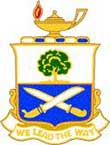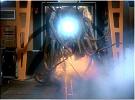LargeSlowTarget
Posts: 4443
Joined: 9/23/2000
From: Hessen, Germany - now living in France
Status: offline

|
quote:
ORIGINAL: Mike Scholl
Terrific! Someone finally presents some solid support for applying this restrictive rule
equalhandedly..., and the forum virtually ignores it. Come on, all you supporters of
the "hamstring the Allies" movement. Let's hear some well thought out response,,,,
Probably not well thought-out, but...
We started talking about numbers of CVs per TF, now we talk strike sizes, okay. I've argued that the Japanese have been using six carriers concentrated in one TF from Day 1 of the war, and tended to keep KB together for the most part (Hiryu/Soryu detached for Midway, Shok/Zuik for Coral Sea, one CV (Kaga or Akagi?) absent in the Indian Ocean due to upkeep). I also claim that the JN was able to launch coordinated strikes from those carriers, the number of a/c per strike being limited only by the inherent restrictions of carrier ops, i.e. the ability of the carriers to launch only a certain number of a/c at once. I agree that the PH strike was a maximum effort and that the JN apparently could launch slightly less than 50% of its CAG in one wave. This is already modelled by the number of carrier ops points. Furtermore I've argued that Japanese strike waves tended to have better coordination and cohesion and usually arrived (or failed to find the target) in distinct and compact waves. I have also agreed that JN CAP did not benefit from fighter direction centers and therefore should suffer a CAP penalty (or the USN a CAP benefit, or both)
On the other side, I went on to argue that the USN did not operate multi-CV-TFs early in the war due to inferior doctrine regarding carrier warfare and shortage of CVs (and pressing strategic demands which precluded concentration of CVs, I might add - theoretically they could have concentrated six fleet CVs in one TF as well). Even if several CVs were available, they were operated in seperate TFs (although Task Group would be the proper term, but that wasn't used until later in the war). The same inherent restrictions to carrier ops also applied to the USN, whose 'full deckloads' also comprised only part of the total number of a/c aboard (can someone come up with the precise number of a/c per full deckload?). From what I have read I have gained the impression that USN carrier air strikes tended to be launched and/or to arrive at the target area piecemeal and rather uncoordinated but for chance (Midway), with strike groups from different carriers not joining up, taking different paths to the target area, parts of strike groups becoming separated, lost or joining up with 'wrong' elements of other strike groups. Simply adding up the numbers of a/c launched per carrier battle doesn't say anything at all in this regard. I have also stated that the USN enjoyed a certain CAP advantage due to fighter directors, which performed less-than-optimal early in the war but became better with time.
Translated into WitP:
1a. CAP penalty for JN and/or CAP benefit for USN growing with time
1b. related to this, penalty for JN strike escorts (hand signals, few radios), none for USN
2. limit of numbers of a/c that can be launched per given time per carrier
3. limit on number of CVs that USN can operate in one TF early in the war
4. JN strikes tending to be bigger, but prone to miss the target entirely, USN strikes tending to split up in uncoordinated smaller strikes (some of which failing to find target)
Question is how #3 can be achieved - by house rules in PBEM, Malthusian 'moral restraint' if playing against AI or by denying the player the ahistorical benefits of concentrating his CVs with an early war strike penalty (or a what-if-scenario with no penalty if we assume that the USN did have an early war doctrine for concentrated CV-TFs and the means, training and experience for such operations).
< Message edited by LargeSlowTarget -- 1/3/2005 8:51:17 AM >
_____________________________
|
 Printable Version
Printable Version





















 New Messages
New Messages No New Messages
No New Messages Hot Topic w/ New Messages
Hot Topic w/ New Messages Hot Topic w/o New Messages
Hot Topic w/o New Messages Locked w/ New Messages
Locked w/ New Messages Locked w/o New Messages
Locked w/o New Messages Post New Thread
Post New Thread